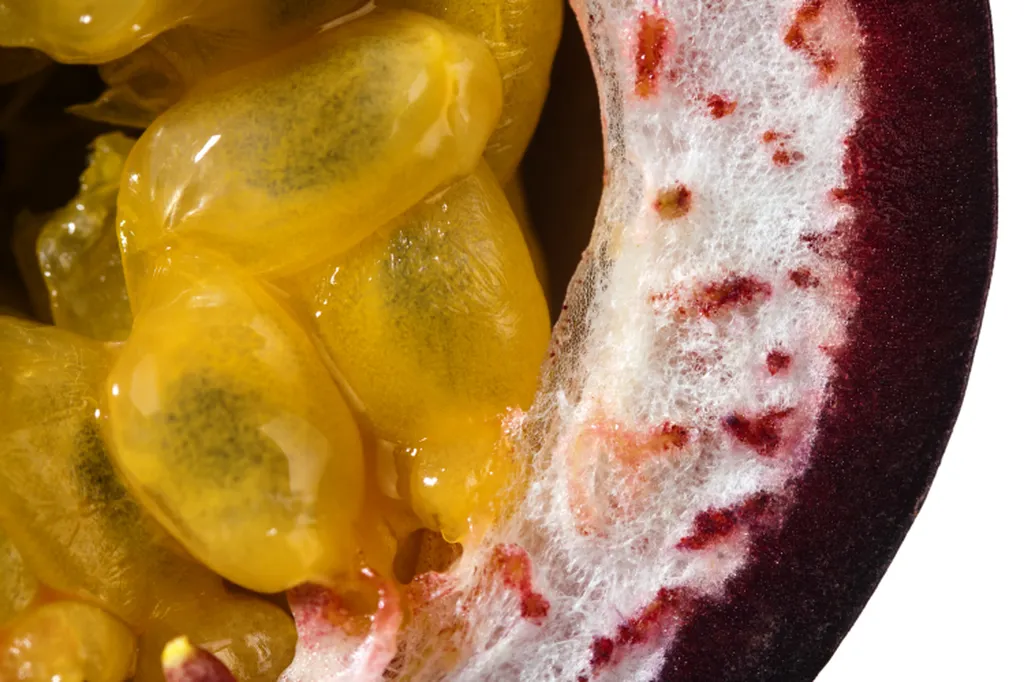In the quest for sustainable and functional food packaging, researchers have turned to an unlikely source: passion fruit waste. A recent study led by Jiaman Sun from Jiaying University and the Key Laboratory of Passion Fruit Biology and Genetic Breeding, published in the journal *Ultrasonics Sonochemistry* (which translates to *Ultrasonics and Sonochemistry* in English), has developed a novel bio-based active packaging film using pectin extracted from discarded passion fruit peels. This innovative approach not only addresses agricultural waste but also enhances the performance of packaging materials, offering significant commercial potential for the food industry.
Passion fruit peels, often discarded as agricultural waste, are rich in natural pectin, a polysaccharide with excellent film-forming properties. Sun and her team utilized this pectin to create a multifunctional composite film through an ultrasound-assisted casting method. The process incorporates eggshell powder and oleuropein, a polyphenol derived from olive leaves, as functional additives. The ultrasound treatment played a crucial role in promoting the uniform dispersion of these fillers and facilitating molecular interactions, thereby enhancing the film’s structural integrity and overall performance.
The study systematically investigated the molecular structure, mechanical strength, thermal stability, barrier properties, and antioxidant activity of the resulting films. Through optimization experiments, the researchers identified the best-performing film formulation, which contained 2% (w/w) eggshell powder and 1% (w/w) oleuropein. This formulation achieved a tensile strength of 2.68 MPa, a water vapor transmission rate of 11.66 g/m²/24 h, and a DPPH radical scavenging activity of 80%.
FTIR analysis revealed that calcium ions from the eggshell powder formed stable ionic cross-linking networks with pectin molecules, as evidenced by the redshift of hydroxyl stretching peaks. This interaction significantly enhanced the film’s mechanical properties and barrier performance. “The incorporation of eggshell powder not only improved the tensile strength but also reduced the water vapor transmission rate by 18.4%,” Sun explained. “This dual enhancement makes the film highly suitable for food packaging applications.”
The addition of oleuropein significantly boosted the film’s antioxidant capacity in a dose-dependent manner. The DPPH radical scavenging activity increased markedly from 16% to 80% as the oleuropein concentration was elevated from 0.1 to 1.5%. “Oleuropein’s strong electron-donating and hydrogen-atom transfer ability effectively neutralizes free radicals, amplifying the overall antioxidant response of the composite films,” Sun noted. This property is particularly valuable for extending the shelf life of food products by preventing oxidative degradation.
The commercial implications of this research are substantial. The development of bio-based active packaging films from agricultural by-products offers a sustainable and cost-effective solution for the food industry. By utilizing waste materials, the technology reduces environmental impact and promotes circular economy principles. Moreover, the enhanced barrier and antioxidant properties of the films can improve food preservation, reducing waste and increasing profitability for food producers and retailers.
As the demand for eco-friendly and functional packaging materials continues to grow, this research paves the way for future innovations in the field. The integration of ultrasound technology, natural polymers, and bioactive compounds presents a promising avenue for developing high-performance packaging solutions. “This study demonstrates the potential of combining ultrasound treatment with bio-based materials to create advanced packaging films,” Sun concluded. “We hope our findings will inspire further research and commercial applications in sustainable food packaging.”
With the global food packaging market projected to reach $439.7 billion by 2025, the adoption of such innovative technologies could significantly impact the industry. By leveraging agricultural waste and advanced processing techniques, companies can achieve both environmental and economic benefits, driving the transition towards a more sustainable future.

